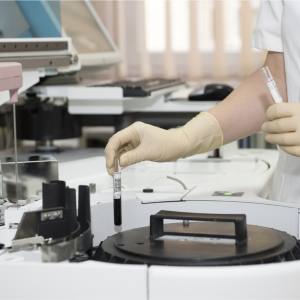IVF is a complex and fast-moving medical field and technological advances are the key to its success. Birth defects can occur in up to 5% of pregnancies[1] and one method used to flag up potential problems with a developing embryo is Preimplantation Genetic Testing (PGT). These highly sophisticated scientific techniques can assess whether an embryo has a genetic or chromosomal abnormality, as these issues can be the cause of unsuccessful embryo transfer, miscarriage or result in the birth of a baby with a genetic condition. It maximises the chance of selecting a healthy embryo, which in turn increases the likelihood of having a healthy baby.
What's in a name?
It can be hard to keep up with the myriad add-on treatments and ever-changing terminology that IVF patients have to grapple with. You are probably familiar with the acronyms PGD (Preimplantation Genetic Diagnosis) and PGS (Preimplantation Genetic Screening). To ease confusion, these acronyms have now been replaced by the umbrella term PGT (Preimplantation Genetic Testing), which covers all genetic research carried out on an embryo.[2]
The 4 tests under the PGT umbrella are:
PGT-A: Formerly known as PGS, this aims to identify embryos affected by aneuploidy (extra or missing chromosomes).
PGT-M: Formerly known as PGD, this screens for monogenic (single-gene) disorders such as cystic fibrosis or sex-linked diseases like Duchenne muscular dystrophy, caused by heritable genetic mutations carried by one or both parents. It can identify around 2000 inherited single-gene disorders and is 98% accurate.[3]
PGT-SR: Tests for structural rearrangements of chromosomes, such as translocations (when a piece of one chromosome breaks off and attaches to another chromosome) or inversions.
PGT-HLR: Human Leukocyte Antigen matching is used to identify embryos that are HLA compatible with a child who is in need of bone marrow or cord blood transplant.
Who is a good candidate for PGT?
Consider screening if you identify with any of the following:
- Advanced maternal age of 35+ (can lead to an increase in chromosomal abnormalities)
- Partner diagnosed with male factor infertility
- One or both partners are carriers of single-gene disorders that could be passed on
- Chromosomal abnormalities in either partner's family history
- Chromosomal translocation in either partner (can result in repeated miscarriage)
- Recurrent miscarriage
- Recurrent unsuccessful embryo transfer (fresh or frozen)
- Previous pregnancy affected by a chromosomal abnormality
Are there any risks?
PGT involves performing a biopsy (removing a small number of cells) on an approximately 5-day-old embryo called a blastocyst, which is then screened for chromosomal and genetic problems in a laboratory. Very rarely, this process can damage the embryo and prevent it from developing further or implanting. PGT-A has a higher margin of error than PGT-M and the one clinical trial to date that looked into false-positives found a rate of around 10%, which would result in the equivalent of 6.8% of viable embryos being discarded.[4]The incidence of false-negatives is much smaller, but still exists, meaning embryos with chromosomal abnormalities can end up being transferred to the womb. Mosaicism is another concern. This is when the biopsy sample shows both normal (euploid) cells and abnormal (aneuploid) cells. Mosaic embryos are transferred if the number of abnormal cells does not exceed a certain level, but mosaic embryos with a high level of aneuploidy have resulted in successful live births, meaning there is currently no definitive way of knowing whether a mosaic embryo can result in a healthy baby or not.
Tailoring your IVF toolkit
PGT is not a silver bullet, but it may put your mind at ease if you feel you are in a high-risk category. It is one more tool to consider when creating a bespoke, individualised treatment plan that offers you the highest chance of success. It is imperative that you go with a clinic and doctor that have extensive experience and expertise in the field and who employ the latest techniques and technologies. Be sure to enquire about patient numbers (you want a facility that routinely performs these procedures) and check for patient testimonials that can back up their credentials.
Contributing writer: Natasha Robinson


